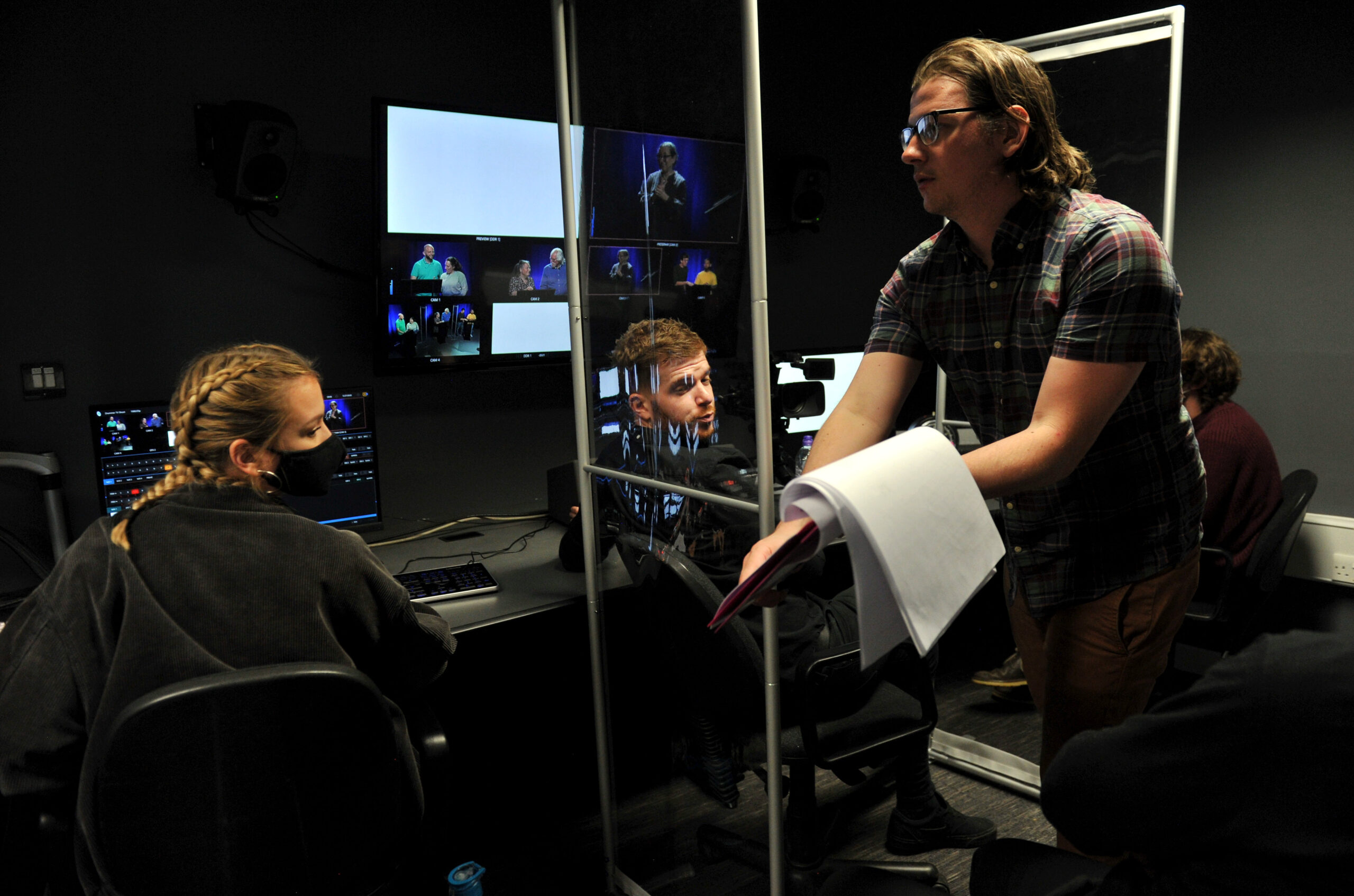
video production for web videos & advertising films
What is post-production?
Post-production refers to the process of editing and manipulating recorded footage or audio recordings after they have been captured. It is an essential part of film and video production and can include a variety of tasks such as video editing, color correction, sound design, special effects, and adding music or voiceovers.
Post-production is the process of assembling the raw footage into a cohesive and polished final product. This may involve cutting and trimming footage, rearranging scenes, and adjusting the timing and pacing of the video to achieve a desired effect. Another common task in post-production is color correction, which involves adjusting the colors of the footage to create a particular mood or atmosphere.
Sound design is another important aspect of post-production, where sound effects are added to enhance the visual experience and create a more immersive environment. Voiceovers and music are also added during this phase, and sound levels are adjusted to create a balanced and professional sound mix.
Special effects are also often added in post-production, such as creating computer-generated imagery (CGI) or combining different elements to create a seamless visual effect.
Overall, post-production is a critical phase in the filmmaking process that can greatly improve the final product and create a more engaging and immersive experience for the audience.
The three phases of film production
1. Pre-production:
In this phase, ideas are developed and the script is written. Planning the filming and finding suitable locations and actors also take place in pre-production. The budget and schedule are also set.
2. Production:
Production includes the actual recording of the film material. This is where the scenes are shot and the actors appear in front of the camera. The work of the camera team, sound and lighting technicians, as well as the director and producer also falls into this phase.
3. Postproduction:
Post-production begins after filming and involves editing the footage. During this phase, the individual scenes are edited and put together to form a coherent film. Color correction, sound design, special effects, music and voiceover are also processed in post-production.
Each of these phases is of great importance and requires careful planning and execution to produce a successful film.
Video production – pre-production
- Genre/Title/Topic
- target group/viewer
- Budget
- production team
- shooting time
- storyline
- shot list/script
- Locations
Video Production – Production
- Production sound/light equipment setup
- conduct interviews
- record voiceover
- take camera recordings
video production – post-production
- Import recordings
- Optimize image & sound
- cutting scenes
- assembling scenes
- Import, place and mix background music, special effects and other additional elements
- Provision of the finished film (e.g. as a video file, DVD, web upload)
Why your company should use video marketing!
There are many reasons why your business should use video marketing. Here are some of the most important:
- Increased attention: Videos have a higher attention span than text or images. People tend to watch videos to get more information and therefore stay longer on your website.
- Better conversion rates: Videos can help improve your conversion rates because they can capture the attention of your target audience and increase trust in your product or service.
- Increased visibility: Videos are often shared on social media and can therefore help increase the visibility of your business.
- Illustrating products or services: Videos can be used to show your products or services in action, which can help increase understanding and interest among your target audience.
- Personalization: Videos can add a more personal touch and make the audience identify with your business.
- Measurability: You can easily measure how successful your videos are by tracking the number of views, clicks, comments and shares.
Overall, video marketing can be an effective way to promote your business and reach your target audience.
How to Build a Video Marketing Strategy
A successful video marketing strategy requires careful planning and execution. Here are some steps to consider when creating your video marketing strategy:
1. Define your goals:
Before you start creating videos, you should define clear goals. What do you want to achieve with your videos? Do you want to drive more traffic to your website, increase your conversion rates or raise awareness of your brand?
2. Identify your target audience:
Who are the people you want to reach with your videos? What are their needs, interests and pain points? The better you understand your target audience, the better you can create videos that capture their attention and interest.
3. Choose the right platforms:
There are many platforms where you can publish your videos, including YouTube, Vimeo, Facebook, Instagram, LinkedIn, and many more. Choose the platforms that best suit your goals and audience.
4. Create a content strategy:
A successful video marketing strategy requires a targeted content strategy. Identify the topics that are relevant to your target audience and create videos that cover those topics. Avoid being too promotional and instead focus on creating valuable content that interests your target audience.
5. Produce high-quality videos:
The quality of your videos is critical to the success of your video marketing strategy. Make sure your videos convey a clear message, are well lit, and are well produced. If you don’t have any experience in video production, you may want to consider working with a professional video production company.
6. Optimize your videos for search engines:
When you publish your videos on YouTube or other platforms, you should make sure they are optimized for search engines. Use relevant keywords in your titles, descriptions and tags to ensure your videos are found.
7. Promote your videos:
Just because you’ve created a great video doesn’t mean your audience will automatically find it. Promote your videos on social media, email newsletters, and other channels to make sure your audience sees them.
8. Promote your videos:
Track the performance of your videos to see if you’ve achieved your goals. Measure the number of views, clicks, conversion rates, and other metrics to see how well your videos are performing. Use this information to improve and further optimize your video marketing strategy.
A successful video marketing strategy takes time, patience and hard work. However, if you follow these steps and continuously work on improving your strategy,




